Charleston Currents #11.27 | May 20, 2019
BUCOLIC SETTING. If you’re looking for a pleasant weekend outing that’s a little off the downtown beaten path of gazing at gardens of fences to see South of Broad gardens, let us suggest spending a couple of hours in the pathways of Caw Caw Interpretive Center near Ravenel. It’s a short drive from Charleston and about as peaceful of a setting as you will find. Tip: Bring bug spray.
 FOCUS, Adams: 548 miles down; Only 1,644 to go!
FOCUS, Adams: 548 miles down; Only 1,644 to go!
COMMENTARY, Brack: Nerf candidates for mayor up to it again
IN THE SPOTLIGHT: Charleston RiverDogs
GOOD NEWS: Bring on the arts
FEEDBACK: Send us your thoughts
MYSTERY PHOTO: Narrow, tall building
S.C. ENCYCLOPEDIA: Education in South Carolina, part 3
CALENDAR: From community discussions to arts around the community
FOCUS, ADAMS: 548 miles down; Only 1,644 to go!
Editor’s note: Retired newsman Jerry Adams posted this picture May 17 at the quarter-way point (548 miles) of his second summer-long hike on the Appalachian Trail (AT). “Only 1,644 miles to go. Woohoo!” he said. You can keep up with his travel at at-grasshopper.com or on Facebook.
By Jerry Adams, contributing editor
MAY 14, 2019 | Their chatter let me know they were coming a few minutes before they caught up to me on the trail this morning. I stopped to let the young couple pass and we chatted.
“Since I left Springer in March, more than 500 people have passed me on the trail, “ I said. “But that’s OK. I’m slow. We’ve been out here for more than 500 miles and more than 500 hikers have already left the trail, ending their journey. We’re still here!””
They smiled. We chatted briefly about the two topics on every hiker’s mind — the machete guy and bears. Bears have been wreaking havoc in this area of Virginia, and the machete guy had just been arrested for killing one thru-hiker and cutting up another.
That’s so very sad. I am waiting to read the coverage to see if I knew the victims. One woman I met had been harassed by him 100 or so miles back. I pray it wasn’t her. The crazy man had been arrested for aggressive behaviour and then released in Tennessee and North Carolina. A man I know bought him a bus ticket home and tried to help him, but he ended up back on the trail anyway just north of Marion.
Bears have been getting into food bags, even those hanging from trees. They are becoming more and more aggressive in this part of Virginia, and I altered my hiking plans to stay where bear-proof metal containers were available. So far, thankfully, no bears.
I was without cell coverage for several days and when I got a signal, I was bombarded with messages that had sat unread for days. Are you OK??? They all asked, having seen the news coverage of the machete guy that I had missed.
I’m fine, ambling along on my Appalachian Trail journey from Georgia to Maine. I am old and tired, but upright and mobile! It has been a couple of hundred miles since I last posted; this is the first real opportunity to sit at a computer and process (and share) my thoughts and my adventure.
Three hours ago, I was on the trail, planning to stay at a nearby hostel, wondering where I was going to resupply. The trail detoured down a road and a woman stopped, rolled down her window, and asked if I wanted a ride to Marion. I thought briefly, and said “Sure!” Twenty minutes later, we were at the library. (I confess I went to get a tasty cheeseburger and fries at a Main Street restaurant before walking back up the hill to this keyboard.)
An ever present issue
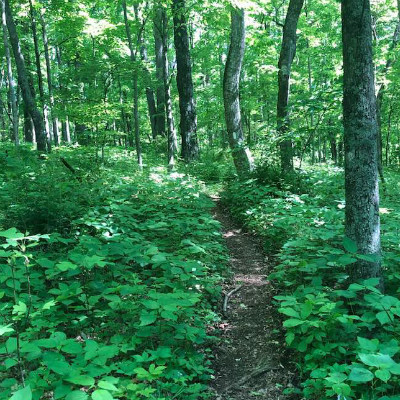 Weather continues to be an issue just as it was the last time I thru-hiked in 2011, but I have had remarkably good luck at sections I really wanted to see. The details of the hike from Hot Springs, N.C., to Erwin, Tenn., escape me (smile,) but the hike north from there was wonderful. I weathered a thunder, lightning and a hail storm the last time I hiked through Beauty Spot Gap clearing and Roan Mountain was hidden by dense fog, with heavy rain thrown in for good measure.
Weather continues to be an issue just as it was the last time I thru-hiked in 2011, but I have had remarkably good luck at sections I really wanted to see. The details of the hike from Hot Springs, N.C., to Erwin, Tenn., escape me (smile,) but the hike north from there was wonderful. I weathered a thunder, lightning and a hail storm the last time I hiked through Beauty Spot Gap clearing and Roan Mountain was hidden by dense fog, with heavy rain thrown in for good measure.
This time, the weather was wonderful. Bill Hasskamp, an old high school buddy, had asked me to pray for his parents as I hiked through the area. Their ashes were scattered on Big Hump Mountain, and I thought of them — and him — and my parents who died years back. It came to me that my Dad, who died in 1972, had been dead for more years than he had lived. It also came to me that my Mom passed away about six weeks after her 68th birthday and that I have now lived longer than she lived.
Big Hump Mountain was more spectacular than Roan, but it doesn’t get the attention because there is a road by Roan. It’s a hard hike up Big Hump, but well worth it.
I thought I had the mountain to myself as I surveyed the extraordinary scenery, but then realized I had company. A young woman thru-hiker named Turnip was nearby. She looked beyond me and said, “Oh, there’s Grandfather Mountain! That’s where I learned to backpack!” She was getting emotional, and I was too, taken by the wonderful world God has made. I told her that I was so glad that she was there with me, because it was so nice to have someone to share this terrific experience. She agreed, we chatted and she hiked on, leaving me to my thoughts.
I pushed on to Damascus, Va., 470 miles from Springer Mountain in Georgia and got there on a Thursday afternoon after an 18-mile day.
My last time there, eight years ago, I found a surprise at the post office. A high school buddy sent me a photo from the 40th reunion of the Christ School class of 1969. He wished me well on my hike and challenged me to name the guys in the photo.
This time, that same friend, Adair Watters, greeted me at the post office and took me to Arden, N.C., for our 50th reunion. It was surreal to be out of the woods and back on campus with the guys with whom I shared the journey to manhood. Another friend gave me a ride home on Sunday and I rested and swapped out gear before heading back to Damascus.
I was puzzling over how to get back to Damascus, when Bill Hasskamp sent me a message telling me that if I got to Asheville, he’d get me the rest of the way. Awesome. I spent a nice evening with Bill and his wife Jo Anne, and I was back on the trail one week after I left.
The hike continues, and the weather continues to be colder and rainier than I would like, but I also know that soon it’s going to be hot. Very hot.
Despite the rain, I have been blessed to share some wonderful time with the ponies of Grayson Highlands. Mares and foals were hanging out at Thomas Knob Shelter when I got there.
This place is very special to me. Eight years ago, again in the rain, I had a chance encounter with a man who became one of my best friends. He was headed south, I was going north and we found that we had a special place in common — Mepkin Abbey, a Trappist monastery near Charleston. That’s my spiritual home and he’s the caregiver for my friends, the brothers.
We shared stories and news about the brothers and he gave me a group photo of the guys. He went south and I continued north. The Lord brought us together.
So after an hour at the keyboard, it’s time to get a hot shower and a look at the news.
I might stop by the library in the morning to post again after I get my thoughts together and have another meal or two. I didn’t expect to be here and would not be except for the kindness of a woman named Debbie, who stopped and offered me a ride.
God is Great. Patience Grasshopper and trust in the Lord thy God. Onward and northward; on to Maine.
- Have a comment? Send to: editor@charlestoncurrents.com
BRACK: Nerf candidates for mayor up to it again
By Andy Brack, editor and publisher | The Nerf candidates of Charleston’s mayoral race are up to no good again.
 Instead of working to make Charleston more livable and better, as exemplified by what Mayor John Tecklenburg is trying to do, these nimrods are spewing slimy spitballs during council meetings and generally wasting time.
Instead of working to make Charleston more livable and better, as exemplified by what Mayor John Tecklenburg is trying to do, these nimrods are spewing slimy spitballs during council meetings and generally wasting time.
And perhaps, they’re showing their intelligence and leadership, or lack thereof. Or maybe they’re just taking attack bait supplied by the Tweedle Twins, West Ashley council members Bill Moody and Keith Waring, who have spent three years plotting against Tecklenburg.
First comes Republican councilman Gary White, who so wants to score a political home run that he attacked the mayor for a contract with the Charleston School of Law first negotiated in 2007 on a Woolfe Street property. In 2017, the city and law school renegotiated the deal to allow the school to sell the property if it didn’t want to build a permanent campus there and, if that happened, to return 25 percent of the proceeds to the city. Council voted unanimously to approve, even though White was absent that night. The deal was to last until July, with the possibility of a one-year extension.
 But like a pouty child, White made a motion last month to not extend the agreement, flailing during a mayor’s race that he now didn’t like the deal. Council went along, seemingly not understanding how the school can work around the extension by paying off the note – which should be pretty easy because it has a buyer for the property.
But like a pouty child, White made a motion last month to not extend the agreement, flailing during a mayor’s race that he now didn’t like the deal. Council went along, seemingly not understanding how the school can work around the extension by paying off the note – which should be pretty easy because it has a buyer for the property.
While White denies using the deal for political purposes, Charleston School of Law President Ed Bell was skeptical, as he told the Charleston Regional Business Journal: “To have someone use this, to use one of their best institutions in Charleston, for political purposes, was shocking to me,” he said. “It was basically a squeeze play. They tried to put a squeeze on one of their local institutions.”
Then comes humdinger Harry Griffin, a young council member little known for more than bombast and ego. He complained earlier this month about Tecklenburg having his wife’s contact information on the back of his business card. (It’s well-known around town that people often call the mayor’s wife to relay concerns because, as Tecklenburg said here, “Some folks, I don’t know if they’d be intimidated to call on the mayor. I authorized it. I thought it was a good idea.)
We do too. It’s a way for the mayor to get more information to do his job better. City lawyers say there’s nothing illegal or unethical about adding his wife’s phone number to the card, which cost a whopping extra $10 or so.
But Griffin, like White before him, had to play the politics: “”After looking into this matter, I wanted to find out who paid for this card. My initial concerns are, number one, is she a city employee or a city official? This has gone unnoticed and swept under the rug. We are giving Ms. Tecklenburg some credibility.”
What hogwash, as former mayoral candidate and state Rep. Jimmy Bailey of Charleston said in a Facebook post that’s gained some momentum:
“Shame on all the members who did not have the common decency to inquire about this issue in private conversations with the mayor — or talk to the city’s legal folks or the finance office. Had they done so, they would have found out the extra cost was less than $11 — $11 — and that nothing was illegal or unethical
“My conclusion is several members knew what the councilman was up to before the meeting. If true, it is the most underhanded display of leadership, very much like Trump and his lack of decency. … I understand politics and differing opinions on positions, but let’s get real. Mayor Tecklenburg is dealing with a rogue council that is at best obstructionist.
“When we have traffic, flooding (and) more people than our city can accommodate, the cheap politics of this city council is beyond belief.”
Well said. But don’t look for this nonsense to stop. Unless you call them on it. The election is Nov. 5.
- Andy Brack’s new book, “We Can Do Better, South Carolina,” is now available for $14.99 in paperback via Amazon.
- Have a comment? Send to: editor@charlestoncurrents.com
SPOTLIGHT: Charleston RiverDogs
 The public spiritedness of our underwriters allows us to bring Charleston Currents to you at no cost. This issue’s featured underwriter is the Charleston RiverDogs.
The public spiritedness of our underwriters allows us to bring Charleston Currents to you at no cost. This issue’s featured underwriter is the Charleston RiverDogs.
The team’ is home tonight (May 20) and over the weekend, when players will slug it out in a four-game series starting Friday with the Columbia Fireflies.
In 2018, the club celebrated its 25th season (that’s 175 years in “Dog” years!!) and, for the second season in a row, hosted more than 300,000 fans. The team had a 64-72 record, but saw 15 players promoted to higher levels in the club’s structure during the season. Click here to review the season.
The Lowcountry’s leader in sports entertainment, Charleston RiverDogs baseball is an attractive, affordable medium for your group or business. The RiverDogs develop the next major league stars for the 27-time World Champion New York Yankees at one of the finest ballparks in Minor League Baseball — Joseph P. Riley, Jr. Park.
Three short words sum up the everyday approach taken by the Charleston RiverDogs front office. The brainchild of club President Emeritus Mike Veeck, the nine-letter phrase “Fun Is Good” is meant to be a guideline and daily reminder of how employees should approach their jobs and in turn capture the imagination of the fans to turn them into repeat customers.
- Visit the ‘Dogs online at: RiverDogs.com
- To meet all of our underwriters, click here.
Bring on the arts
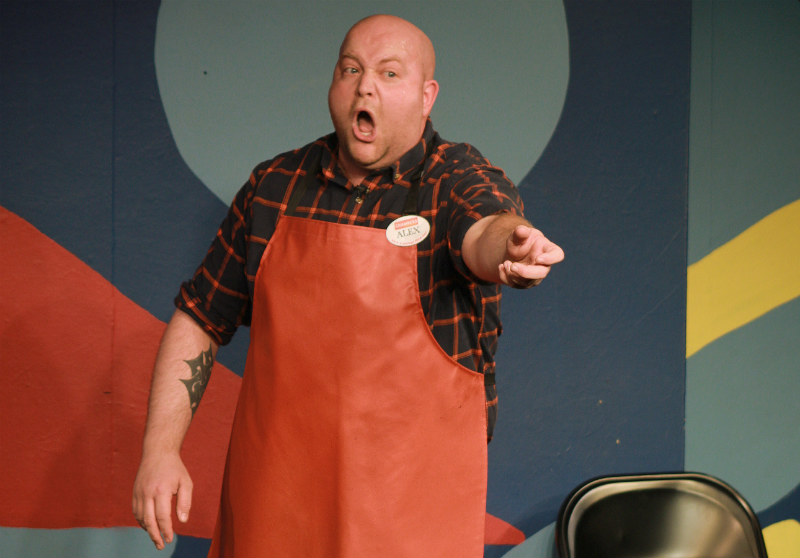
FESTIVAL TIME: PURE Theatre will offer three shows of Butcher Stories, the world premiere solo-comedy from Andy Livengood (Theatre 99, The Christmas Will Be Televised): 8 p.m. on May 29, 9 p.m. May 30 and 4 p.m. June 2, Cannon Street Art Center, 134 Cannon St., Charleston. More info: PURE Theatre. Photo, provided, by Ben Egelson.
Staff reports | It’s only a few days until the start of the Spoleto festival season.
From May 24 to June 9 all over the Charleston area, the sheer quality of the music, art and culture for 17 days is mind-blowing. Events through the main festival, Spoleto Festival USA, generally cost more that the city-backed Piccolo Spoleto, but the big festival is a draw that brings in people from all over the world. To see all of the offerings, go online here: SpoletoFestivalUSA.org.
At Piccolo, there are more than 500 events from which to choose. Check out our earlier coverage, which has lots of ideas and links for just the right thing for you to do. Still stymied? Find a free day on your calendar and check out the Piccolo calendar for something that’s on. Be spontaneous. You’ll have a great time. More.
In recent Good News:
![]() Tell ‘em about the flyover: Have your say 6 p.m. to 8 p.m. today (May 20) in the cafeteria at St. Johns High School (1518 Main Road, Johns Island) about how you’d like Charleston County to improve the intersection at U.S. Highway 17 and Main Road with an overpass or “flyover” to deal with rush-hour traffic. According to the Coastal Conservation League, the $195 million project is the most expensive on a list of transportation projects presented to voters before a sales-tax referendum in 2016.The county is holding this public meeting to present design alternatives and gather feedback from local residents. You can also make clear in your comments that you want projects like this — those that were specifically mentioned in the sales-tax ordinance — completed. If you can’t make it to the meeting, you can submit comments online here through June 19. You also can mail them to: Charleston County, Ms. Devri DeToma, P.E., Project Manager, 4045 Bridge View Drive, North Charleston, SC, 29405.
Tell ‘em about the flyover: Have your say 6 p.m. to 8 p.m. today (May 20) in the cafeteria at St. Johns High School (1518 Main Road, Johns Island) about how you’d like Charleston County to improve the intersection at U.S. Highway 17 and Main Road with an overpass or “flyover” to deal with rush-hour traffic. According to the Coastal Conservation League, the $195 million project is the most expensive on a list of transportation projects presented to voters before a sales-tax referendum in 2016.The county is holding this public meeting to present design alternatives and gather feedback from local residents. You can also make clear in your comments that you want projects like this — those that were specifically mentioned in the sales-tax ordinance — completed. If you can’t make it to the meeting, you can submit comments online here through June 19. You also can mail them to: Charleston County, Ms. Devri DeToma, P.E., Project Manager, 4045 Bridge View Drive, North Charleston, SC, 29405.
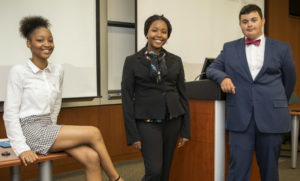
Top 3 Finalists, L-R: Tayler Mccray, Burke High School; Tyra Jefferson, Heyward Career Center; and Trey Evans, Ashley Ridge High School. Photo provided.
YESCarolina winners. Tyra Johnson, who attends Heyward Career Center in Columbia, won first place in YESCarolina’s statewide annual business plan competition as well as $3,000 in seed money for her business, Tyra’s Big World of Flavor. Second place went to Summerville’s Trey Evans of Ashley Ridge High School, who won $2000 in seed money for his business, E&B Music Mouthpieces. Third place and $1,000 in seed money went to Burke High School student Tayler Mccray for her Tayler Made It plan. More than 40 high school students from across the state competed to win seed money for their businesses and a trip to New York City during this Shark Tank-style entrepreneurship competition. More info: YESCarolina.com.
Special session starts. Members of the General Assembly return today to Columbia to take up compromises on the $9 billion state budget as well as a huge incentive package to lure the NFL’s Carolina Panthers to locate from North Carolina into the Palmetto State. But what may be the biggest topic of the week is the fate of the state’s utility, Santee Cooper. Will it be sold or just managed by folks from the outside? Correspondent Lindsay Street outlines what’s going on in this must-read report.
Send us your thoughts
We’d love to get your impact in one or more ways:
Send us a letter: We love hearing from readers. Comments are limited to 250 words or less. Please include your name and contact information. Send your letters to: editor@charlestoncurrents.com. | Read our feedback policy.
Tell us what you love about the Lowcountry. Send a short comment – 100 words to 150 words – that describes something you really enjoy about the Lowcountry. It can be big or small. It can be a place, a thing or something you see. It might the bakery where you get a morning croissant or a business or government entity doing a good job. We’ll highlight your entry in a coming issue of Charleston Currents. We look forward to hearing from you.
Narrow, tall building
Here’s a tall, interesting building somewhere in South Carolina’s Lowcountry. But where? Send your guess to editor@charlestoncurrents.com. And don’t forget to include your name and the town in which you live.
Our previous Mystery Photo
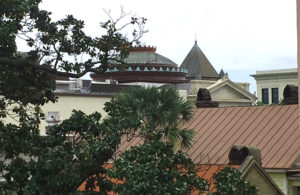 Our May 13 mystery, “Interesting roofscape,” wasn’t in Turkey or France or some other place (yes, we tried to trick you a bit.) It was, as reader Jim McMahan of Charleston noted, a view of Charleston “showing roof lines of the kitchen house at Husk, roof and bishop chimneys of Poogan’s Porch, the cupola of Gibbes Art Museum, the roof of Circular Congregational Church and a portion of BNC building.” Well done!
Our May 13 mystery, “Interesting roofscape,” wasn’t in Turkey or France or some other place (yes, we tried to trick you a bit.) It was, as reader Jim McMahan of Charleston noted, a view of Charleston “showing roof lines of the kitchen house at Husk, roof and bishop chimneys of Poogan’s Porch, the cupola of Gibbes Art Museum, the roof of Circular Congregational Church and a portion of BNC building.” Well done!
Hats off to everyone else who recognized the roofscape: Chris Brooks and Joan Zaleski, both of Mount Pleasant; Joe Mendelsohn and Aden Ferillo, both of Charleston; George Graf of Palmyra, Va.; Marnie Huger of Richmond, Va.; and Bill Segars of Hartsville.
Segars recognized our trick: “The photo was taken with a telephoto lens from the roof deck of a parking garage on the corner of Queen Street and King Street,looking north. The white building with the two windows and the dental freeze, on the right of the photo is a bank building at 134 Meeting Street. Do I get any extra credit for this much information, assuming the information is correct?”
Yes, you do, Bill. Yes, you do!
- Send us a mystery: If you have a photo that you believe will stump readers, send it along (but make sure to tell us what it is because it may stump us too!) Send it along to editor@charlestoncurrents.com.
HISTORY: Education in South Carolina
S.C. Encyclopedia, part 3 of 4 | At mid- 20th century South Carolina schools remained in perilous condition. In the face of rising concern over the quality of the schools, the legislature commissioned the George Peabody College for Teachers in Nashville, Tennessee, to survey the schools and make recommendations for their improvement. Published in 1948, the survey revealed a host of problems: 1,680 separate school districts in the state, expenditures per child in the wealthiest districts at more than twice that in the poorest, state spending per pupil and teacher salaries below the national and southern averages, and school completion rates half the national average. These dismal figures hid the discrepancies between spending on white students and that on black students. In Clarendon County, for example, per-pupil expenditure during 1949–1950 was $179 per white child and only $43 per black child.
An attempt by black parents in one Clarendon County district to secure bus transportation for their children led to a lawsuit challenging segregated schools. As Briggs v. Elliott worked its way through the federal courts, the white leadership of the state was forced to confront the inadequacies and inequities in South Carolina schools. The legislature approved a $75 million bond issue supported by a three percent sales tax to address school issues and, the white power structure hoped, forestall desegregation. Court-ordered desegregation came as a result of Brown v. Board of Education (1954), the decision that also addressed Briggs v. Elliott, and although South Carolina was slow to comply, in the fall of 1963 eleven black children were admitted to previously all-white schools in Charleston. By 1970–1971 South Carolina schools were fully desegregated.
In a strange twist of fate, white resistance to desegregation finally brought the kind of attention to the public schools that they had so long needed. While still behind in some areas, since the 1970s South Carolina schools fully participated in the national debates over schooling and the consequent policy experiments that characterized schools throughout the nation. The Education Finance Act of 1977 identified a “defined minimum program” for South Carolina schools and attempted to address financial inequities in the schools. The Basic Skills Assessment Act (1978) and the Educator Improvement Act (1979) reflected the “back to basics” movement in education and teacher competency.
Accountability and assessment are key to understanding education in South Carolina in the last two decades of the twentieth century. Evidence of the shortcomings of the educational system in South Carolina included the fact that in the early 1980s, on the Comprehensive Test of Basic Skills (CTBS), a national standardized test required by South Carolina since 1973, averages in all grades tested were below the national average in all tested subjects. On the Basic Skills Assessment Program (BSAP), required since 1978 in grades one, three, six, eight, and eleven, the disparity in scores made by white students and those of African American students was growing. Repeatedly South Carolina was ranked last on the Scholastic Assessment Test (SAT), a test that predicts college performance. During the 1980s and 1990s the General Assembly passed a series of laws that directed the educational system to become more responsible for the development of schoolchildren.
— Excerpted from an entry by Deborah M. Switzer and Robert P. Green Jr. This entry may not have been updated since 2006. To read more about this or 2,000 other entries about South Carolina, check out The South Carolina Encyclopedia, published in 2006 by USC Press. (Information used by permission.)
CALENDAR: From community discussions to arts around the community
![]() Living Your Truth discussion: 6:30 p.m. to 8:30 p.m., May 21, Mount Zion AME Church, 5 Glebe St., Charleston. The Social Justice, Racial Equity Collaborative’s Living Your Truth series tackles friendship, membership, and discrimination with Dr. Melvin Brown III and Dr. Andrew Savage IV. Last fall, Brown was cosponsored by Savage to become one of the Charleston Rifle Club’s more than 800 members. Of the 14n candidates up for consideration, Brown was the only one rejected. The club’s anonymous voting process, which allows only six votes to blackball a candidate, reinforced the private club’s 164-year practice of race-based discrimination. Local attorney, Dwayne Green will moderate this conversation and invite questions from the audience.
Living Your Truth discussion: 6:30 p.m. to 8:30 p.m., May 21, Mount Zion AME Church, 5 Glebe St., Charleston. The Social Justice, Racial Equity Collaborative’s Living Your Truth series tackles friendship, membership, and discrimination with Dr. Melvin Brown III and Dr. Andrew Savage IV. Last fall, Brown was cosponsored by Savage to become one of the Charleston Rifle Club’s more than 800 members. Of the 14n candidates up for consideration, Brown was the only one rejected. The club’s anonymous voting process, which allows only six votes to blackball a candidate, reinforced the private club’s 164-year practice of race-based discrimination. Local attorney, Dwayne Green will moderate this conversation and invite questions from the audience.
Piccolo Spoleto: May 24 to June 9, all over Charleston. There’s more than 500 events during the city’s 17-day companion festival to Spoleto Festival USA. Check out our earlier coverage, which has lots of ideas and links for just the right thing for you to do. Still stymied? Find a free day on your calendar and check out the Piccolo calendar for something that’s on. Be spontaneous. You’ll have a great time. More.
Spoleto Festival USA: May 24 to June 9, all over the Charleston area. The sheer quality of the music, art and culture in Charleston for 17 days is mind-blowing. These shows cost more than the sister Piccolo Festival, but hey, this is the main draw that brings in people form all over the world. More: SpoletoFestivalUSA.org.
May book sale: May 24 and May 25, Cynthia Graham Hurd/St. Andrews Library, 1735 N. Woodmere Dr., Charleston. The Charleston Friends of the Library will hold its annual West Ashley book sale with thousands of great books and other items at low prices. The event supports programming at the library. More.
Tea Rooms: Here’s a list of tea rooms that will be in full swing during Spoleto season:
Second Presbyterian Church: 11 a.m. to 2 p.m. May 24-25; 12:30 to 3 p.m., May 26. Lunch, cake and tea. Fellowship Hall, 324 Meeting St., Charleston.
Grace Church Cathedral: 11:30 a.m. to 2 p.m. May 27 to June 8 (except June 2). Lunch and a gift shop. See menu here. 98 Wentworth St., Charleston.
Fair book signing: 5:30 p.m., May 29, Blue Bicycle Books, 420 King St., Charleston. Join J. Henry Fair to celebrate On the Edge: Combahee to Winyah, hiss new photo book that captures the state’s changing coastline. All the revenue from sales of On the Edge will benefit the Coastal Conservation League and support its mission to protect South Carolina’s coastal resources and communities.
Events at the Gaillard. Check out these awesome coming events at the Charleston Gaillard Center, 95 Calhoun St., Charleston:
Songs of America: Jon Meacham and Tim McGraw: 7:30 p.m., June 11. Join Grammy Award-winning Tim McGraw and Pulitzer Prize-winning author Jon Meacham as they explore American history through music. Tickets are $65 to $350. More.
TheSkimm Night Out. 7:30 p.m., June 25. The founders of theSkimm are coming to your city for a fun night out, full of empowering conversation, networking, cheersing, and more to celebrate their new book, How to Skimm Your Life. Tickets are $48 to $150. More.
Hat Day in the Sun: 11:30 a.m., June 21, Marion Square, King Street, Charleston. Once again, the Hat Ladies will be distributing FREE hats to men, women and children to emphasize the importance of hat wearing for sun protection. They’ll hand out hats as long as supplies last; one hat per customer. More: www.hatladies.org.
Early morning bird walks at Caw Caw: 8:30 a.m. every Wednesday and Saturday, Caw Caw Interpretive Center, Ravenel. You can learn about habitats and birds, butterflies and other organisms in this two-hour session. Registration not required, but participants are to be 15 and up. $10 per person or free to Gold Pass holders. More: http://www.CharlestonCountyParks.com.
AREA MARKETS
![]() TUESDAYS. The Mount Pleasant Farmers Market is every Tuesday from 3:30 p.m. to 7 p.m. at the market pavillion at Moultrie Middle School, 645 Coleman Blvd., Mount Pleasant. Free parking. Lots of activities. More info.
TUESDAYS. The Mount Pleasant Farmers Market is every Tuesday from 3:30 p.m. to 7 p.m. at the market pavillion at Moultrie Middle School, 645 Coleman Blvd., Mount Pleasant. Free parking. Lots of activities. More info.
WEDNESDAYS. The West Ashley Farmers Market is every Wednesday from 3 p.m. to 7 p.m. in Ackerman Park off Sycamore Avenue in West Ashley. The last week of the market will be the first week of October. More.
FRIDAYS/SATURDAYS: Night Market. Every Friday and Saturday from 6:30 p.m. to 10:30 p.m. for the rest of the year, you can shop with 108 vendors, including artists and craftsmen, at the night market on Market Street between East Bay and Church streets. It’s more than four blocks of local shopping and fun. Free.
SATURDAYS: Johns Island Farmers Market operates each Saturday from 9:30 a.m. to 1:30 p.m. year-round with more than 50 local farmers and vendors, food trucks, music and more. The market is located on the campus of Charleston Collegiate School, 2024 Academy Road, Johns Island
SATURDAYS: The Charleston Farmers Market is opens 8 a.m. to 2 p.m. in Marion Square each Saturday through Nov. 30. More info.
- If you have an event to list on our calendar, please send it to feedback@charlestoncurrents.com for consideration. The calendar is updated weekly on Mondays.
If you like what you’ve been reading, how about considering a contribution so that we can continue to providing you with good news about Charleston and the Lowcountry. Interested? Just click the image below.
Now out in paperbrack, err, paperback
 We Can Do Better, South Carolina! offers incisive commentaries by editor and publisher Andy Brack on the American South, the common good and interesting South Carolina leaders, such as former U.S. Sen. Fritz Hollings, civil rights advocate Septima Clark, former S.C. Gov. David Beasley and more. There also are discussions on civil rights struggles with which the Palmetto State continues to grapple. as well as commentaries on politics, governments, the hangovers of South Carolina’s past and her future opportunities.
We Can Do Better, South Carolina! offers incisive commentaries by editor and publisher Andy Brack on the American South, the common good and interesting South Carolina leaders, such as former U.S. Sen. Fritz Hollings, civil rights advocate Septima Clark, former S.C. Gov. David Beasley and more. There also are discussions on civil rights struggles with which the Palmetto State continues to grapple. as well as commentaries on politics, governments, the hangovers of South Carolina’s past and her future opportunities.
We Can Do Better, South Carolina! is available for $14.99 in paperback or as a Kindle book for $7.99. Click here to purchase your copy. A paperback version will be ready for order isoon.
- If you have a comment or questions about the book, please let us know at: editor@charlestoncurrents.com
OUR UNDERWRITERS
Charleston Currents is an underwriter-supported weekly online journal of good news about the Charleston area and Lowcountry of South Carolina.
- Meet our underwriters
- To learn more about how your organization or business can benefit, click here to contact us. Or give us a holler on the phone at: 843.670.3996.
OUR TEAM
Charleston Currents offers insightful community comment and good news on events each week. It cuts through the information clutter to offer the best of what’s happening locally.
- Mailing address: P.O. Box. 22261 | Charleston, SC 29413
- Phone: 843.670.3996
Charleston Currents is provided to you weekly by:
- Editor and publisher: Andy Brack, 843.670.3996
- Contributing editor, common good, Fred Palm
- Contributing editor, money: Kyra Morris
- Contributing editor, Palmetto Poem: Marjory Wentworth
- Contributing editor, real estate: Digit Matheny
- Contributing editor, AT: Jerry Adams
- Contributing photographer: Rob Byko
SUBSCRIBE FOR FREE
Subscriptions to Charleston Currents are free.
- Click here to subscribe.
- Unsubscribe. We don’t want to lose you as a reader of Charleston Currents, but if you must unsubscribe, you will have to do it through the email edition you receive. Just go to the bottom of any of your weekly newsletters and click the “unsubscribe” function. If that doesn’t work, please send us an email with the word “unsubscribe” in the subject line.
- © 2008-2019, Statehouse Report, LLC. All rights reserved. Charleston Currents is published every Monday by Statehouse Report LLC, PO Box 22261, Charleston, SC 29413.


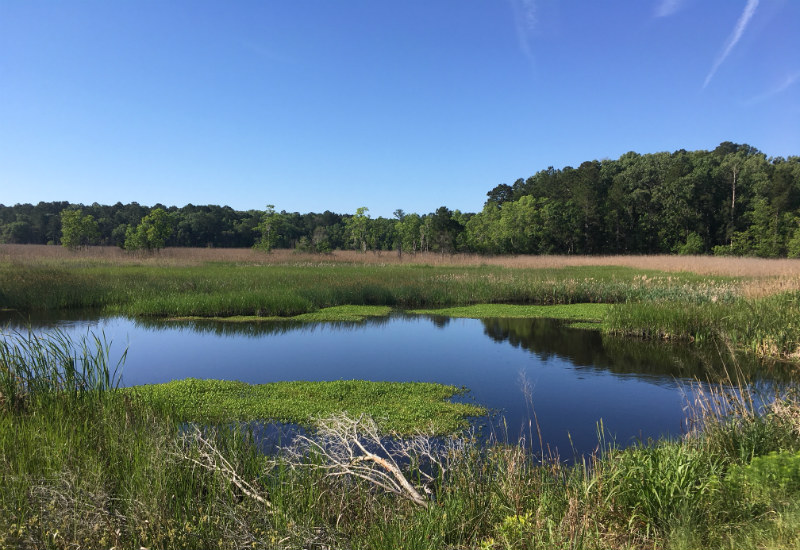


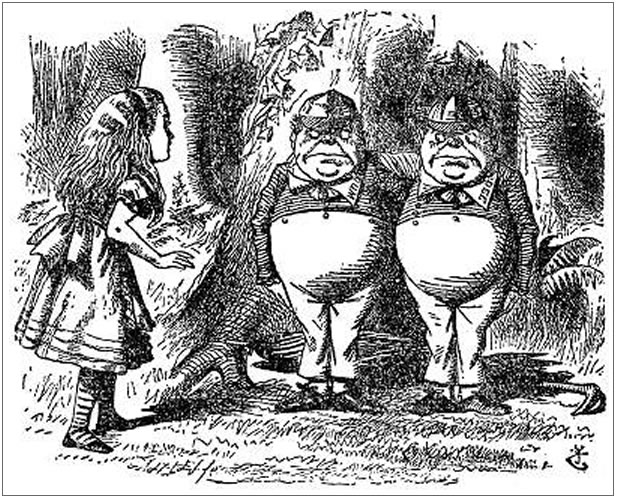



 We Can Do Better, South Carolina!
We Can Do Better, South Carolina!
























